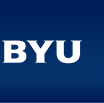BYU Asian Studies Journal
Keywords
Asian Studies, Avenger, Chinese Literature, Humanities, Knight-Errant, Outlaws of the Marsh, Vigilantism, Women
Abstract
Outlaws of the Marsh, also commonly known as Water Margin, is one of the four most beloved classic novels of Chinese literature, most frequently attributed to the 14th-century writer Shi Nai’an. In this novel, one of the more relatively obscure characters among the 108 outlaws of Mount Liang is Gu Dasao “the Tigress,” a heroic woman who is normally characterized as a “woman general” (nüjiang) along with the other two prominent women in the novel, “Ten Feet of Steel” Hu Sanniang and Sun Erniang “the Witch.” This characterization has endured to this day, perhaps due to tradition or simply convenience. However, the modern wuxia or martial heroes genre, which was heavily influenced by Outlaws of the Marsh, features a prominent character type called the female knight-errant, or nüxia. One of the earliest and most notable nüxia characters to emerge is the “Thirteenth Sister” He Yufeng from the 1878 novel The Story of a Hero Boy and Hero Girls (Ernü Yingxiong Zhuan), and this character type has become increasingly prevalent in modern media ever since. In recent decades, scholars such as Roland Altenburger and Luo Manling have reevaluated what it means to be a knight-errant, particularly the female avenger. This research examines Gu Dasao (Mistress Gu) in light of the female knight-errant character type (nüxia) by analyzing her behavior and actions in relation to virtues commonly associated with the female knight-errant, such as seeking vengeance against injustice, selfless bravery, concern for others, and the gender-bending or gender-reversal of traditional Confucian gender roles and feminine behavior. By incorporating renowned Chinese historian Sima Qian’s definition of knights-errant and translations of Ming and Qing dynasty commentaries with Sidney Shapiro’s translation of the novel, this essay seeks to synthesize traditional views on Gu Dasao’s character with modern scholarly discussions of knight-errantry, address potential counterarguments and contradictions within the various definitions of male and female knights-errant, and above all to establish Gu Dasao as a heroic character that more closely aligns with the core spirit of a female knight-errant rather than that of a warrior-general.
Recommended Citation
Christenson, Ryan K.
(2024)
"Mistress Gu the Tigress: Warrior Women & Knight-Errantry in Outlaws of the Marsh,"
BYU Asian Studies Journal: Vol. 9, Article 4.
Available at:
https://scholarsarchive.byu.edu/asj/vol9/iss1/4

